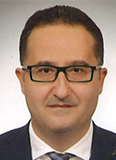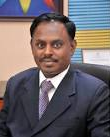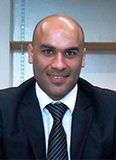

Prof. Dr. Kamil ARSLAN, Karabuk University, Turkey
Research Interests: Thermal Transmission, Thermodynamics, Energy Engineering, etc
Biography: Prof. Dr. Kamil ARSLAN has finished Ph.D from Department of Mechanical Engineering, Gazi University, Turkey in 2010. Currently he is working as Professor of Mechanical Engineering Department at Karabük University, Turkey since January 2020. He is also Head of Mechanical Engineering Department. He is working on experimental and numerical heat transfer, computational fluid mechanics, nanofluid flow, solar energy, magnetohydrodynamics and designing of heat exchangers. He has authored more than 120 research papers in Scopus/SCI/SCIE indexed journals and conferences. He has also published one book chapter. He has worked more than 20 research projects. He has been supervisor of 5 Phd and 11 MSc theses. He is member of editorial bord of two SCIE journals (Strojniški vestnik - Journal of Mechanical Engineering and Journal of Thermal Science and Technology). He is also member of Turkish Society of Thermal Sciences And Technology, American Society of Thermal and Fluids Engineers (ASTFE) and International Solar Energy Society – Turkey Section (ISES-TR-GÜNDER). [MORE]
Speech Title & Abstract: TBD

Prof. Dr. I.Neethi Manickam, Francis Xavier Engineering College, India
Research Interests: Thermal Engineering, Biomass Energy conversion, Renewable Energy Technology, etc
Biography: Dr. I.ethi Manickam is a Professor of Francis Xavier Engineering College and department head of mechanical engineering. He is a life member of Indian Society for Technical Education (ISTE) and Indian Association of Hydrologist (IAH), a member of Institution of Engineers (IE). His research interests are thermal engineering, biomass energy conversion and renewable energy technology. He has published 41 international articles, is a reviewer of several international journals, and also serves as doctoral supervisor at Anna University, India. [MORE]
Speech Title: Bio Hydrogen Production from Biomass
Abstract: Hydrogen production plays a very important role in the development of hydrogen economy. One of the promising hydrogen production approaches is conversion from biomass, which is abundant, clean and renewable. Alternative thermochemical (pyrolysis and gasification) and biological (biophotolysis, water–gas shift reaction and fermentation) processes can be practically applied to produce hydrogen. This speach gives an overview of these technologies for hydrogen production from biomass. The future development will also be addressed.

Assoc. Prof. Dr. Muhyiddine Jradi, University of Southern Denmark, Denmark
Research Interests: Sustainable Energy Technology, HVAC Systems, Energy Storage, etc
Biography: Muhyiddine Jradi, PhD, is an Associate Professor in Energy Engineering and the leader of the Building Energy Modelling and Simulation Group at the Center of Energy Informatics at the University of Southern Denmark. He has a mechanical engineering background and received his PhD degree in Sustainable Building and Energy Technologies from the University of Nottingham, in 2014. Dr Jradi’s main research interests include energy efficient systems, building energy modelling and simulation, energy renovation, multi-generation systems, energy systems numerical modelling and simulation, renewable energy and energy storage. Dr Jradi is currently leading and taking part in multiple international research projects in collaboration with industrial partners and public parities with funding exceeding 4 million USD. In addition, he is serving as a member of multiple journal editorial boards and international conferences’ scientific committees. He has received multiple awards including the Dean of Engineering Research Scholarship for International Excellence from the University of Nottingham and the Sakkal Renewable Energy Award from the American University of Beirut. Dr Jradi research work has led to more than 150 academic publications in leading journals and international conferences. [MORE]
Speech Title: Phase change materials (PCMs)-enhanced building envelope for improved thermal comfort and energy efficiency
Abstract: One of the potential growing techniques of heat modulation in buildings is implementing latent heat storage employing phase change materials (PCM). PCMs are able to absorb and release thermal energy during the process of melting and freezing. During the freezing of a PCM, it releases large amounts of energy in the form of latent heat. Conversely, when the PCM melts, it absorbs large amounts of heat from the environment. In this context, a large block of studies have investigated PCM applications in buildings from different perspectives, mainly divided as active and passive applications. Active PCM applications are generally PCM modules integrated within the building HVAC system as an active energy storage component. On the other hand, passive PCM applications take the form of PCM enhanced building envelope, where the phase change material is embedded within the envelope constructions as an interdependent layer or mixed with another material. Nevertheless, the PCM potential in storing latent heat has proven to be one of the major components and drivers of net zero energy building design. This talk will highlight the recent advancements in the implementation of passive PCM envelope techniques in Danish buildings. PCM-enhanced building envelope under Danish conditions will be presented and evaluated. Dynamic energy models are used for simulating the impact of PCM integration. Four case study buildings in Denmark are considered, and various scenarios of PCM location and positioning within the envelope are simulated. Finally, the impact on the energy consumption, energy capacity, and thermal comfort are presented.